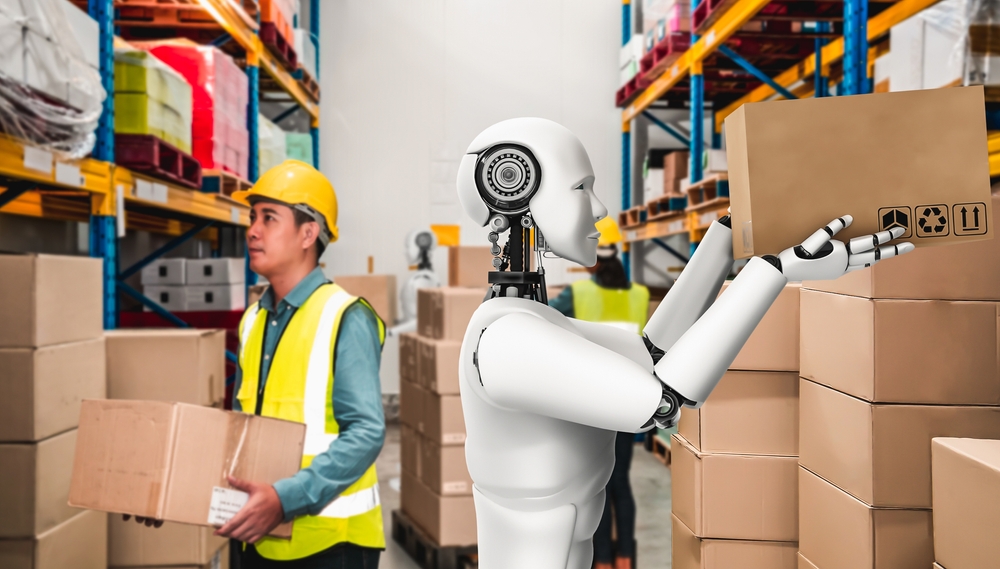How Robots Are Charging Manufacturing, as Told by Thomas Podcast Guests
Share:
Welcome to Thomas Insights — every day, we publish the latest news and analysis to keep our readers up to date on what’s happening in industry. Sign up here to get the day’s top stories delivered straight to your inbox.

From Boston Dynamics’ first commercial robot, Spot, automating inspection for National Grid, to KUKA’s autonomous bot, Javier, helping Ford achieve lights-out manufacturing, robots are working alongside human employees to boost productivity and optimize production. In fact, by 2030, the global robotics market will reach over $60 billion.
However, employing robots in manufacturing processes takes valuable time and resources, which can be daunting for both small and large companies trying to stay ahead of the competition. Experts on the Thomas Industry Podcast shared their companies’ solutions for closing this robotic accessibility gap and revealed how robots are breaking ground in the manufacturing sector today.
Manufacturing in Space with Cobots

With 2.4 million industrial jobs going unfilled in the United States over the last 10 years, the economy has lost a whopping $2.5 trillion. Many companies are turning to collaborative robots (cobots) to close labor gaps and assist employees nearing retirement. From 2022 to 2030, the global cobot market is anticipated to grow at a compound annual growth rate of 32%.
Combining live streaming with robotic equipment, tele-manufacturing is making career opportunities accessible to a more expansive workforce. Connie LaMorte, the principal engineer in the automation and tele-manufacturing group at EWI, explained on the Thomas Industry Podcast that tele-manufacturing “empowers people to be able to work anywhere they want, with any sort of physical disability.”
Tele-manufacturing utilizes a robot to hold a tool that a worker monitors via cameras. Using a stylus-like device, workers can remotely complete critical manufacturing processes like welding, machining, and inspecting.
Tele-manufacturing began as a way to help welders nearing retirement or with accessibility needs continue doing the job they love and “transfer that manual dexterity across the internet,” she said.
But not only is tele-manufacturing closing an accessibility gap in robotics and solving a skilled trades shortage, it’s also achieving feats that are out of this world — literally.
LaMorte explained that tele-manufacturing would make it possible for people to be down on Earth and work on something on the Space Station, which is hovering over 200 miles away from our planet. This could save valuable resources and time for the manufacturing sector.
Listen to the Thomas Industry Podcast interview with EWI’s Connie LaMorte.
No-Code Programming Makes Installing Robots a No-Brainer

By 2024, close to 500,000 industrial robots will be installed each year around the world. Because every robot uses a distinct device with a particular programming language, it takes a skilled programmer to operate a robot. However, no-code programming is increasing robotic accessibility in the manufacturing sector.
On the Thomas Industry Podcast, Chris Adams, senior project manager for the Advanced Robotics for Manufacturing (ARM) Institute, explained that the robotic institute’s mission is to lead the way to a future where both people and robots work together to respond to our nation’s greatest challenges. No-code programming is essential in achieving this feat.
No-code programming is a single, codeless way to program robots. Instead of different programming languages, the tasks workers want a robot to perform are represented with building blocks that work across different types of robots. This means that anyone can learn how to use the system to code or program a robot.
Democratizing robotic programming opens doors for manufacturing companies and factories that don’t have skilled programmers to reap the benefits of worker and robot collaboration and makes the U.S. more competitive on the global stage.
Listen to the Thomas Industry Podcast interview with ARM’s Chris Adams.
Hiring Robots by the Hour

“We’ve been planning to automate.” These are the words that Saman Farid, CEO of Formic Technologies, has heard multiple times from prospective customers in the manufacturing sector.
But why does it take manufacturing companies so long to embrace automation? Farid explained that it often comes down to “risk, complexity, friction, and cost.” While small and large businesses alike could benefit from outsourcing tasks to a robotic workforce, it often comes down to having the expertise and funds to invest in getting started.
From ongoing maintenance costs and training employees on the automation tools, it's an investment that many companies don’t know will end up being a return on investment.
This is where Robots-as-a-Service (RaaS) comes in, which is Formic’s specialty. “We allow a manufacturer to strap a rocket booster to their productivity,” Farid said on the Thomas Industry Podcast.
Before fully committing to implementing automation in a factory, manufacturers can “hire” one of Formic’s hourly robots with no upfront investment. This means companies get unlimited service for a low hourly cost.
When a manufacturer employs one of Formic’s hourly robots, they don’t have to know how the robot works or task an employee with overseeing it — Formic does this for them. This is a major asset for increasing robotic accessibility.
“They can treat us like a staffing agency, where we charge by the hour for the usage of that empty head — except we're staffing with robots instead of people,” Farid said.
Not only does this free up employee time, but it makes the prospect of automating processes far more manageable.
Listen to the Thomas Industry Podcast interview with Formic’s Saman Farid.
More Podcast Insights
- 3 Things Great Problem Solvers Do, as Told by Thomas Industry Podcast Guests
- How to Solve the Catch-22 of Automation Inertia
- How Automation Can Propel Manufacturing Innovation in the U.S.
- Robots-as-a-Service: 3 Ways Manufacturers Can Increase Productivity with Low Upfront Cost
- How No-Code Programming Is Unlocking Robotic Accessibility
- How Tele-manufacturing Is Solving the Skilled Trades Shortage







